Submitted by WA Contents
Ctrl+Space announces Venice Re-Creation Centre Competition Winners
Italy Architecture News - Jun 04, 2016 - 21:49 10095 views
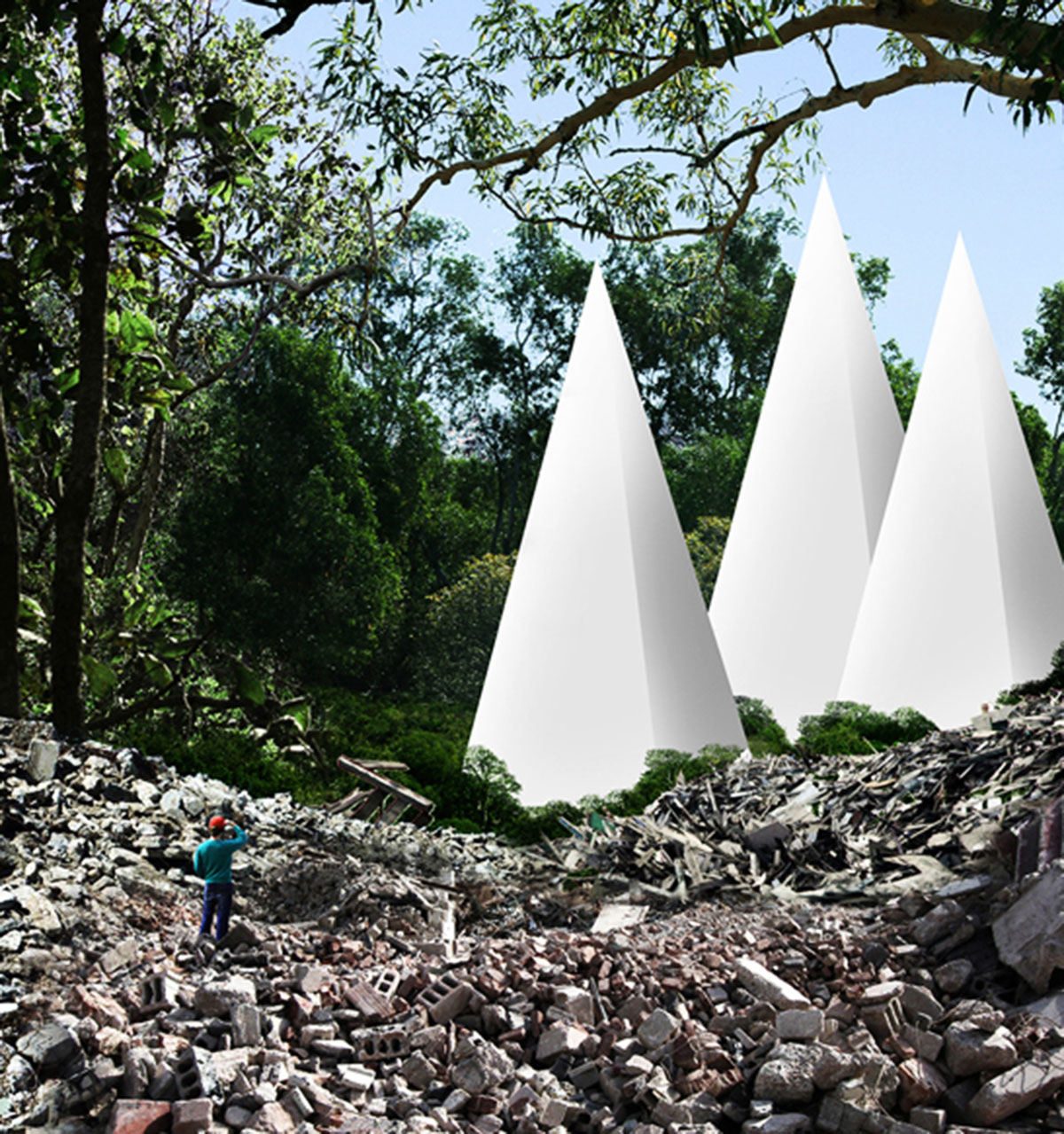
Ctrl+Space, an online platform that creates and promotes architectural competitions, has announced the winners of Venice Re-Creation Centre Competition. The 'Venice Re-Creation Centre Competition' focused the city that gives us a view of the past but at the same time shows us a glimpse of the future. Its particular conditions generated a whole new type of city that has managed to sustain urban life in the most unique way.
Simultaneously, this competition managed to provide answers that refer back to ways of dealing with the past, contemplating present needs and also to discern what lies ahead. The theme of urban reactivation is a fertile ground for solutions that bridge architecture with other areas of knowledge to retrieve the space from its present state of dilapidation and decay. Some strategies showed that the integration of arts and creativity that were used in the past to treat patients would at this time be used back to restore the site itself to full use.
This competition also had as a purpose to challenge participants into thinking of the different lifecycles of buildings that sometimes outlive the architect and what steps can be taken in order to ensure the functional durability of the buildings we produce.
''Under a strict set of guidelines, the most successful projects were able to answer the programmatic needs with a high degree of effectiveness while guiding the discussion through other issues of relevance into the problematic at hand. Out of the rich cultural heritage of the context, participants were able to distill architectural solutions from different aspects of the problem'' commented jury members.
''The proposals have shown a deep reflection on the issues surrounding different theories of preservation, by interfering, by not interfering, by cleaning up or completely wiping out. The biggest issue brought into question was of how a reprogramming of this site could be accompanied by a physical transformation with the biggest benefits for its users and visitors'' jury members added.
The jury members selected 3 winners from Poland, Switzerland and Belgium and 5 Honorable Mentions from Spain, Poland, Italy and Slovenia. See all the winner projects below:
1st prize winner: ''What crawls after the dusk?'' by Marcin Kitala and Zygmunt Maniaczyk from Czestochowa, Poland
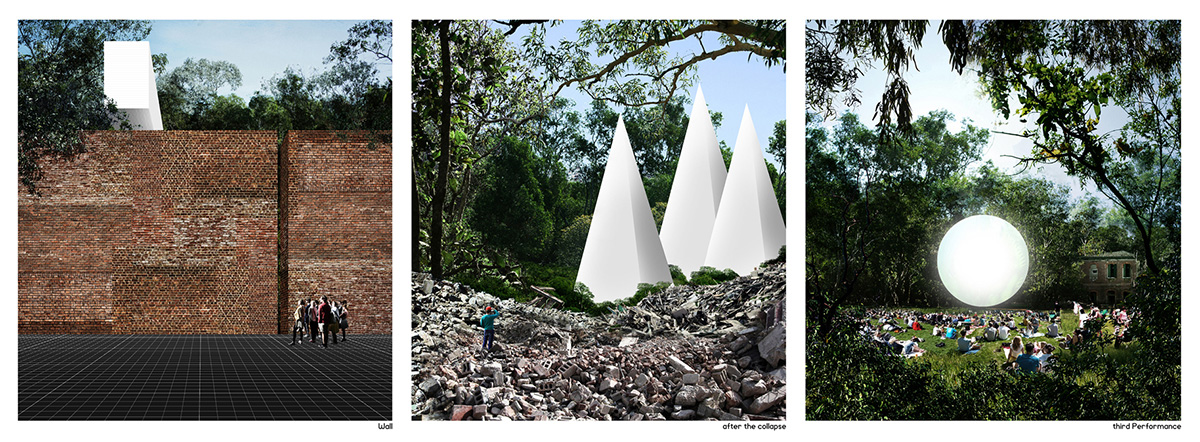
From the Jury: ''The Jury acclaimed this innovative concept that tries to go beyond the idea of functions and explore a secluded spot in the lifecycle of buildings. Preceded by a compelling narrative, the visitor’s path throughout the building is dramatized, the buildings are personified and reality is elevated to a fantasy status. The visit becomes an expedition. By crossing a Wall, which then becomes a border to reality, a deep forest is found inside, a hidden wonder that embraces the buildings. The narrative is evocative of a fantasy world, reminiscent of Tarkovsky’s “Stalker”. Similarly, the visitor follows a guide around crossing unexpected sceneries and confronted with prodigious aspects of reality.
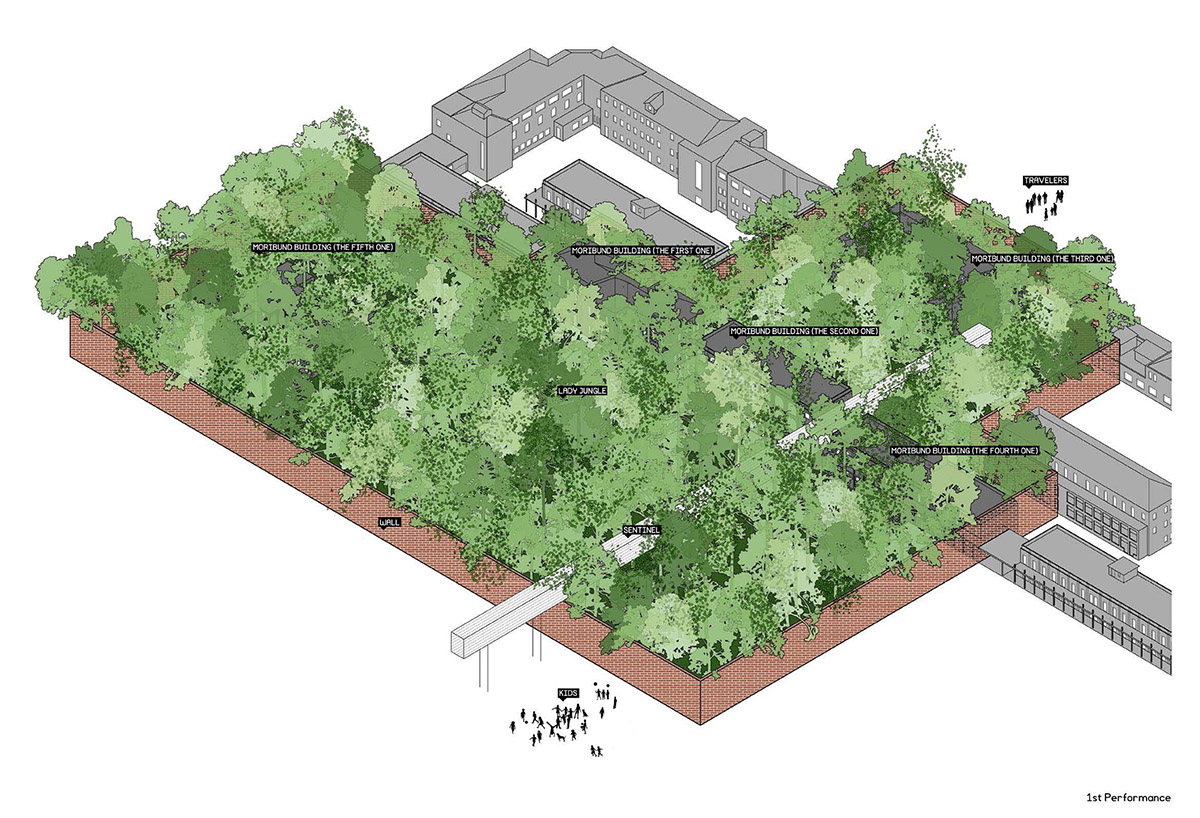
Answering to the programmatic needs of the Brief, the whole building complex becomes the field for artistic creation under the general theme of death and rebirth of buildings. Departing from a deliberate position on not renewing the buildings or restore them to past splendor - a critical position towards a refurbishment attitude that aims to hide the years - a deeply philosophical debate is raised here, about the attitude towards the preservation and reflection on the future of the built environment. This also aims to challenge the community by showing the value of a completely distinct approach in a city where the tendency to preserve the past is deep-rooted.
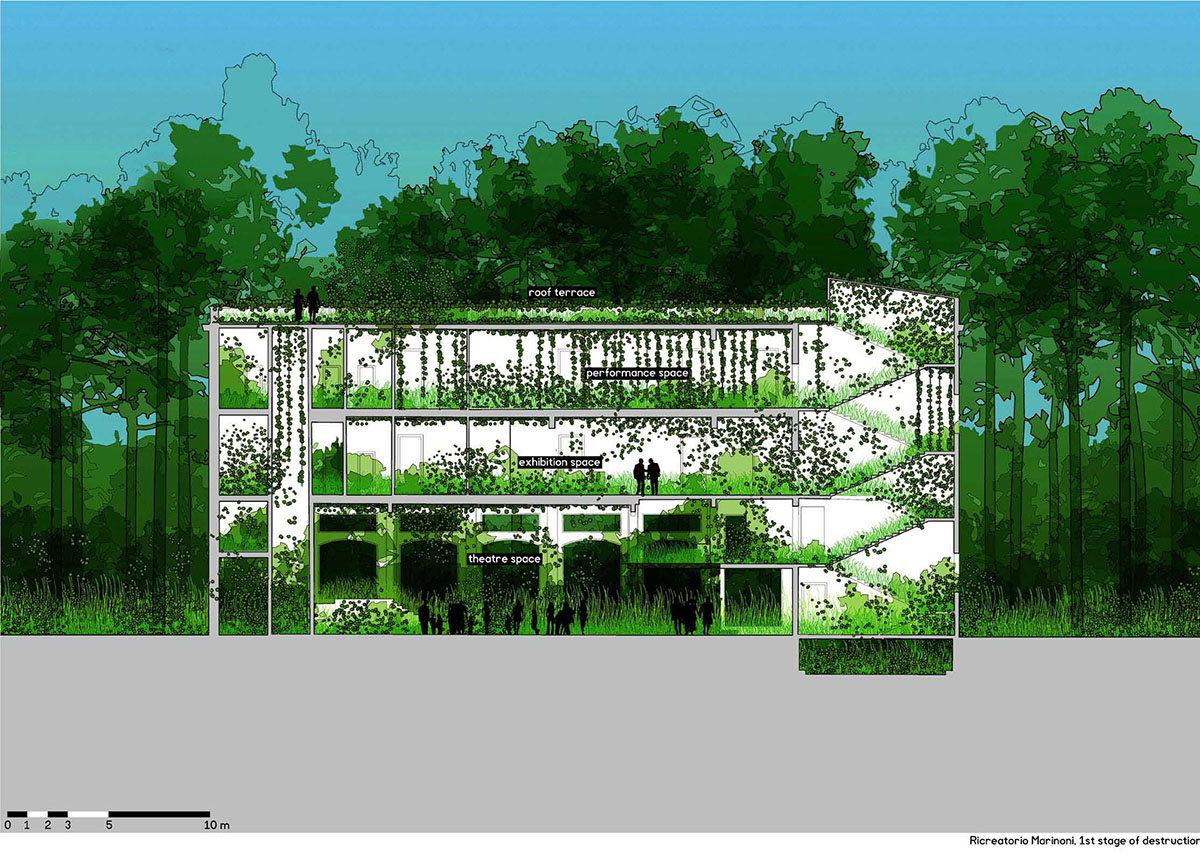
It is critical of a “tabula rasa” approach; it reacts by finding a temporal niche in the history of the place. Harnessing the possibilities of the in-between time, a spectacle is made out of the decay of each of the buildings. It infuses a sense of guilt, as well a sense of grief for the characters that are called “Moribund buildings”. The emphasis is placed in the transition process rather than what will be the future architectural outcome, as an experience beyond the senses. It reflects over the creation of something new by consciously experiencing the tearing down of the physical objects. There is no doubt of the value of the existing buildings but by having one last epic moment, materialized in the so-called “Performances” - a demolition spectacle - where the presence of the buildings is transferred into the realm of memory. There is a glorification of the demolition as a liberating stage for the plot but also for the public, an “Architectural swansong”.
This script is imbued with a universal quality; it successfully broadens the discussion about the future of buildings, argument that is replicable in many places outside of the scope of this Competition.''
2nd prize winner: ''Spiritosa Invenzione'' by Stefano Gariglio, Matilde Mellini, Matteo Pallaoro and Alberto De Giovanni, from Atelier Lapis - Mendrisio, Switzerland
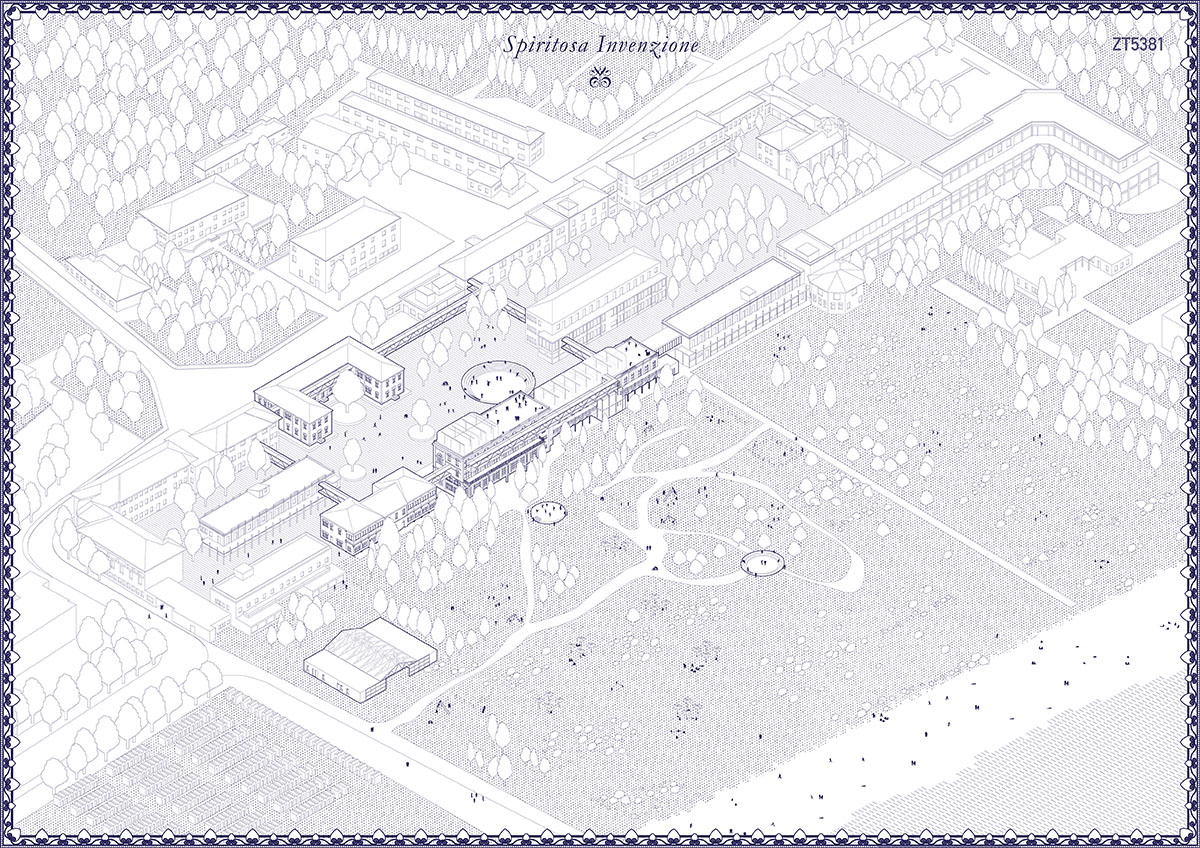
From the Jury: ''The effort in providing a strong, simple concept was acknowledged and acclaimed by the Jury. It manages to solve many issues only with the introduction of one single element that pervades the whole situation in a unifying manner. This proposal was commended by the Jury as a splendid answer to the interests and requirements of the location and as a respectful approach towards the existing elements.
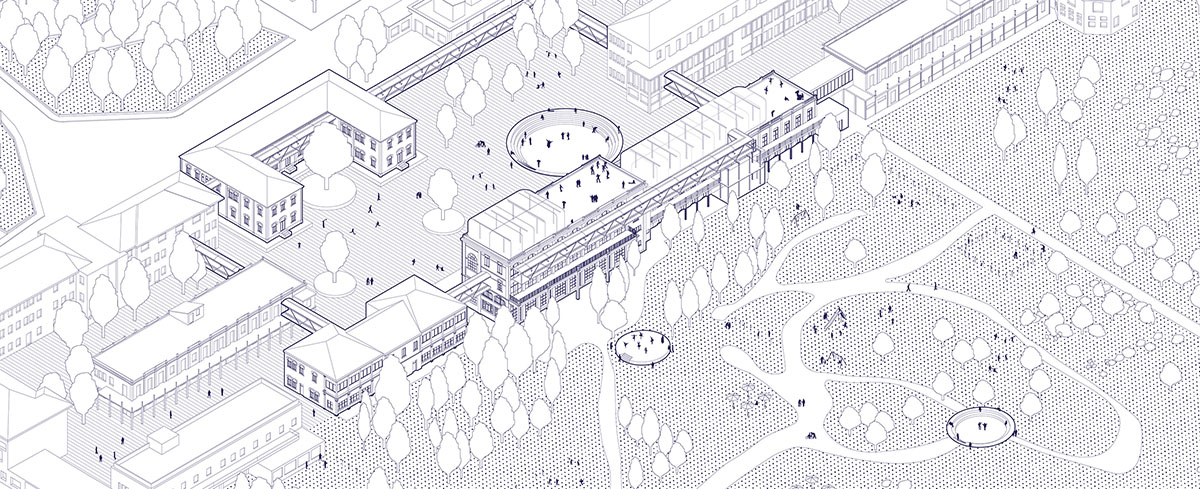
The buildings are linked by footbridges; a device which acts as a hybrid between architectural object and public space, in the way that it is a structural element that serves a dynamic function. This connection element at a higher level displaces the network of paths from the ground level and introduces a whole new set of experiences to the user, new viewpoints and perspectives over the buildings and the beach. The Bridge archetype is even more relevant in a city like Venice. The bridge theme acts a thread that connects all the buildings together, it positively links the activities, widens the array of activities and experiences for visitors. On the ground level, the public space treatment reacts to the existing context in order to create a new topography of ludic activities and functional elements. Interiorly in the buildings the strategy chosen was to void of all contents and treat each building as an open box, in order to host future activities and introduce a higher degree of flexibility without questioning the exterior identity and hierarchy of the buildings.
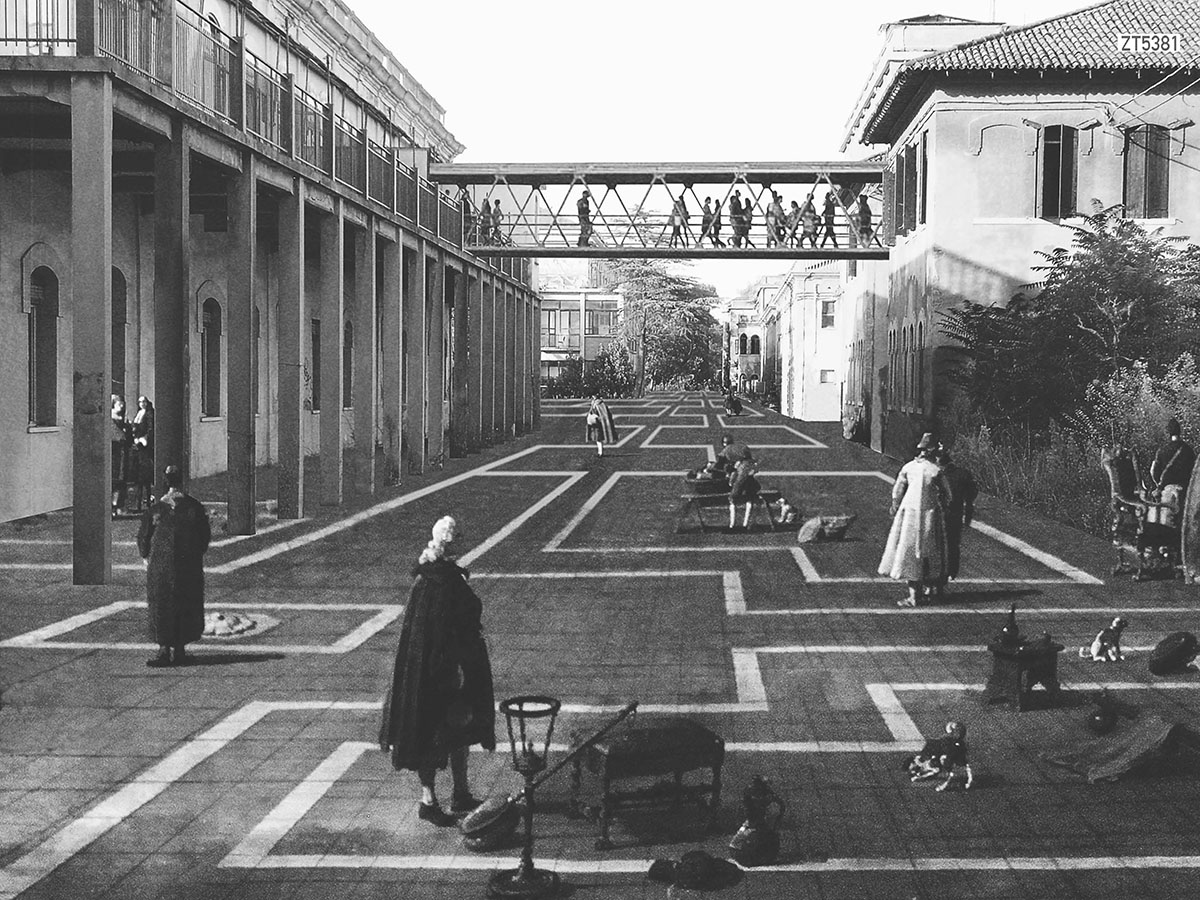
All in all, a sensitive answer to the needs of the Competition Brief with a substantial increment in the enrichment of the identity of the site by its richness of pathways and relation between buildings. This project, by its contained, rational approach of great effectiveness induces the conditions to a cultural rebirth of this sector of the island, as well as retrieves its importance in the context of the city.''
3rd prize winner: ''Third Life'' by Clement Ringot from Tournai, Belgium
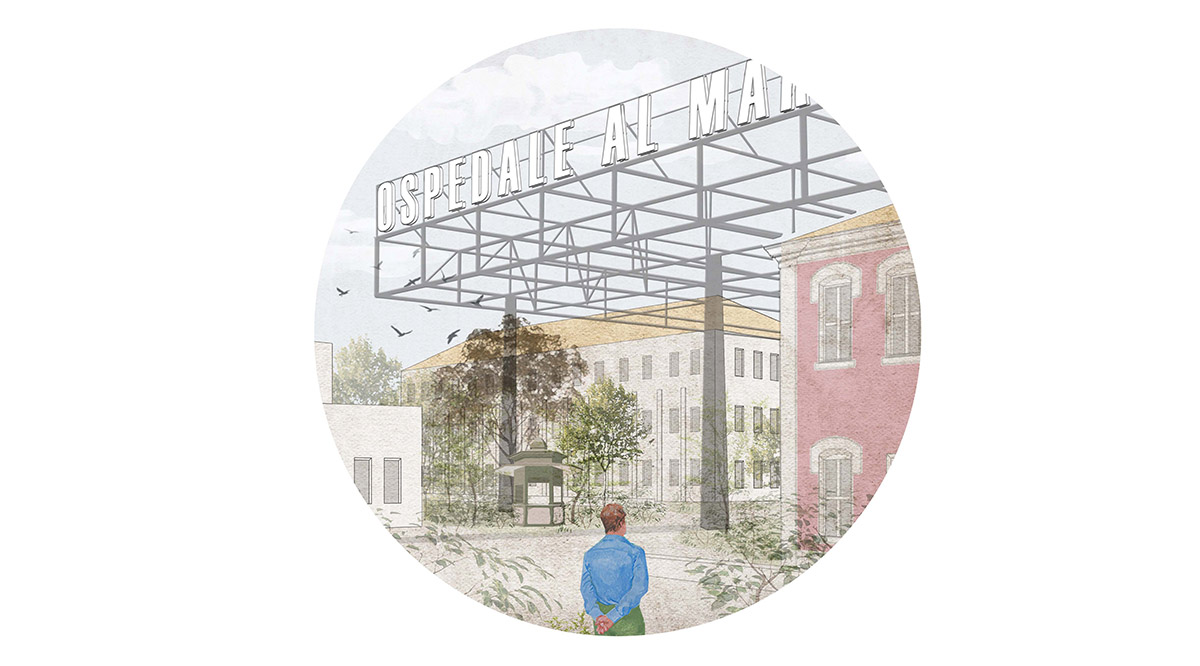
From the Jury: ''This project was acclaimed by the Jury as a harmonious, modest, lightweight intervention that successfully assimilates the natural invasion of recent past and tries to perform a similar intervention through architectural means.
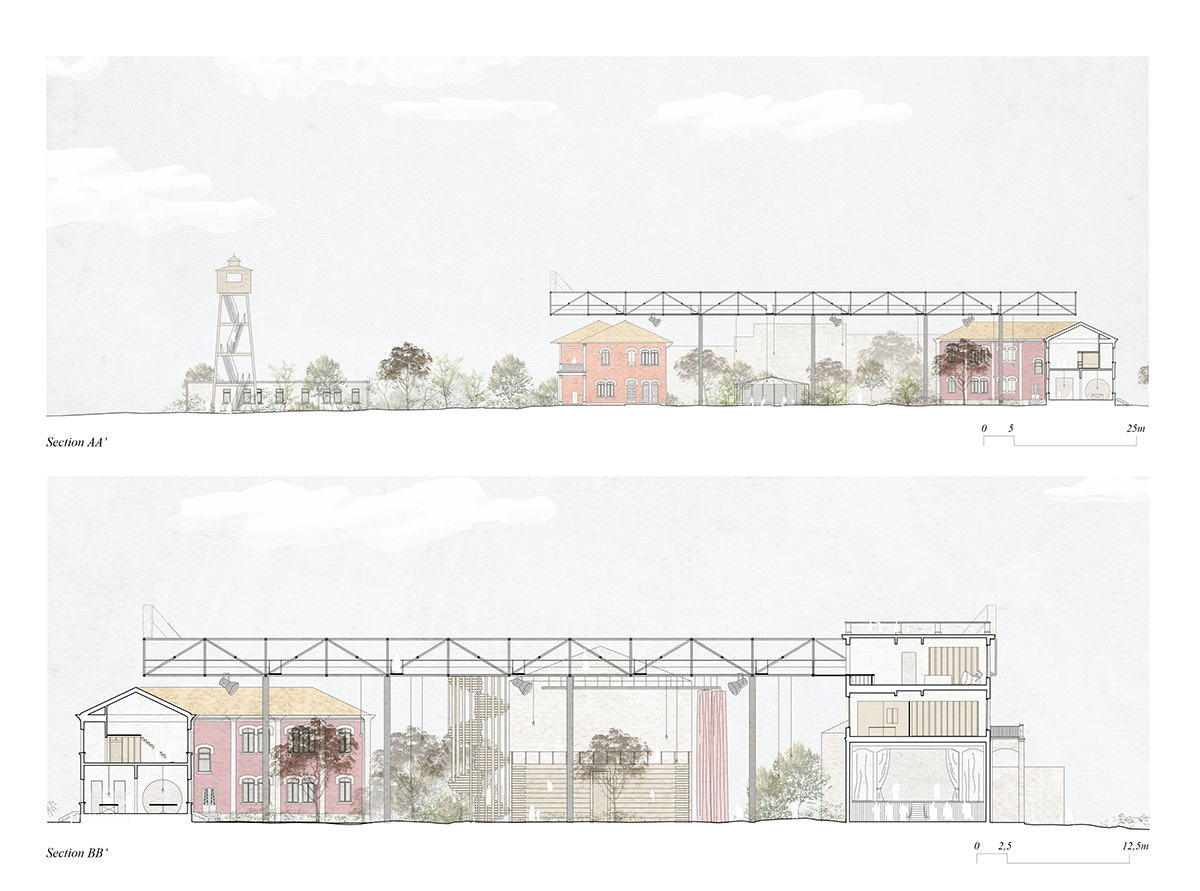
Through a perceptive reading of the history of the location, this proposal comes as an evolution to reestablish the sense of community space. Originating from the existing elements, seen as a “harmonious ensemble”, there is a consideration of the history of the location and its successive alterations in order to host new functions and answer to different needs. This proposal adds successive elements in a way to restart the history that was halted in the past years. These new elements attempt to create an atmosphere of “stimulating dissonance”. This was read under the metaphor of a family to which a new generation is added. Sometimes the connection at first might not be clear, but in time, they all seem to find its respective place.
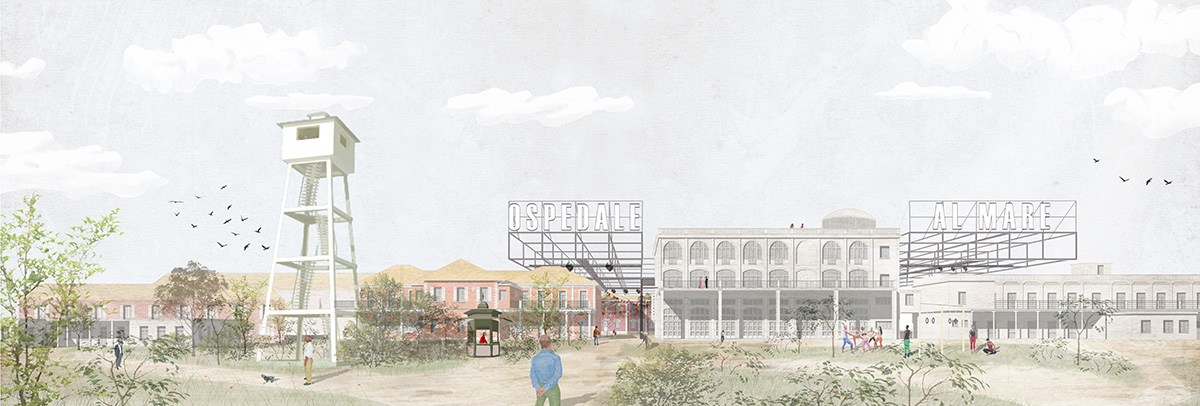
An abstract chess set is generated, in which all the buildings play a role in a rigid Cartesian grid, which makes a stage out of the overall concept. Populated by independent objects, the possibilities of public space appropriation are enlarged. The garden in the Public Space is treated as a backstage for shows and artistic interventions. They all perform together in order to bring people in through the variety of public space activities. It focuses also in the concept of incremental retrofits that relates sensibly to the needs of Association Teatro Marinoni.
All throughout the project an awareness of the history of the place is implicit as well as a position of respect for the present state of the buildings was felt. All added elements are designed to interfere as little as possible with the buildings, evidencing a character of conscious occupation as the main point in its strategy of rehabilitation.''
A Total of 5 Honorable Mentions were selected by the Jury as representatives of some of the more prominent strategies as well as to signal the inherent value of their theoretical and spatial qualities:

Honorable mention: ''Link*Invade*Reactivate'' by Ana Sequeiros Gomez and Javier Torres Navarro from Madrid, Spain
Having its inception in a diagnosis of the discontinuities of the site, the strong value of the project derives from the effectiveness of the unification strategy applied. A unifying pavement that adapts to each building out of which every intervention element grows. The clear code and straightforwardness of the overall scheme was extolled by the Jury. Present is the intention of stating the different historical periods of the Site. This is clearly an intervention by contrast that creates a more adaptable, almost future-proof structure. Interiorly, there is a deliberate tension created by the difference between the orthogonal and the dynamic vectors of the new proposed spaces. It was recognized as an effective strategy in order to answer to the Programmatic needs of the Brief.
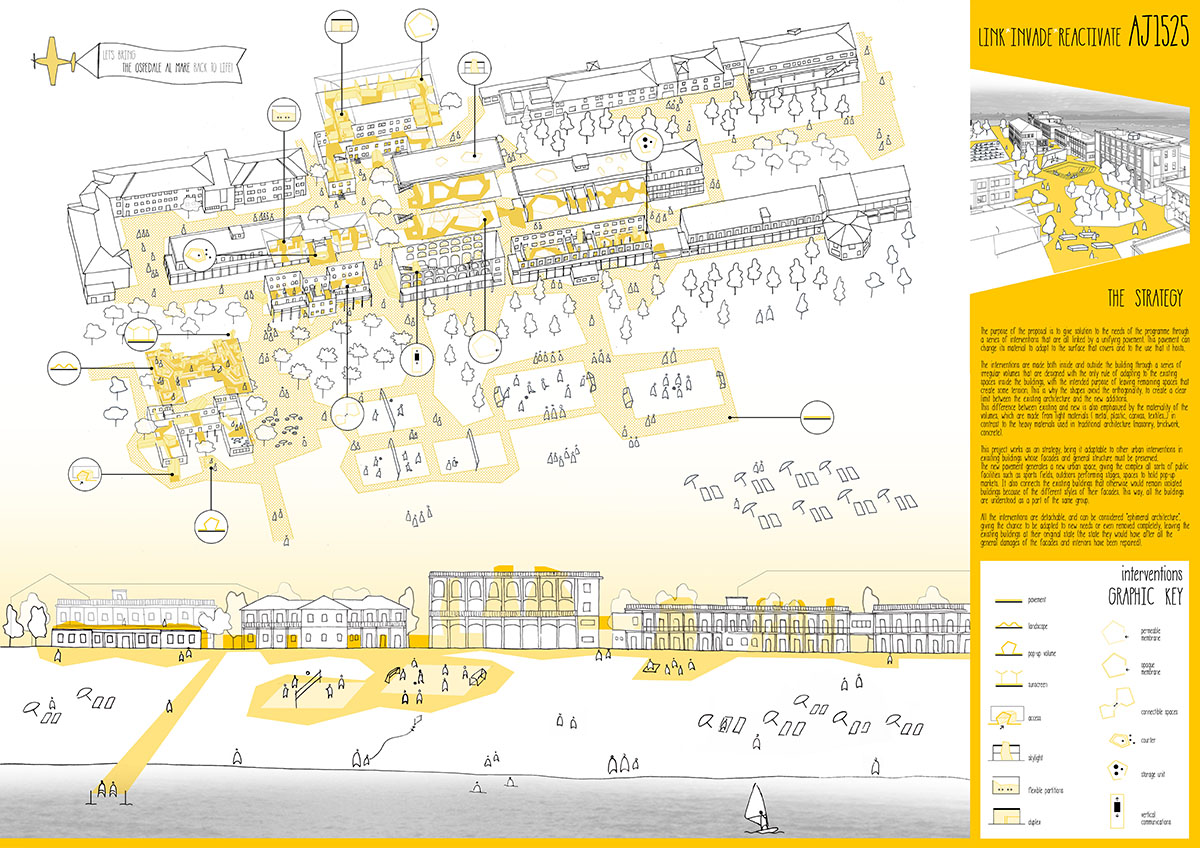
This project is a graphical statement in itself, but raises several other issues: it is understood as a reflection over the obsolescence of functions. On an ultimate stage, the strategy of intervention here is of inherent flexibility. The adaptability of spaces, forms and uses, the setting in place an array of systems that integrate the functional volatility ensure, ultimately, a high degree of unity.

Honorable mention: ''Regeneration'' by Pawel Kuczynski and Wojciech Losa, from Ruda Slaska, Poland
This project set out to show the definite power that Architecture has to condition the experiences of people, in this case regarding health and healing practices. Departing from the vanguardist attitude towards the curative process from the former “Ospedale al Mare” this proposal makes a strong case that there is still need for a space of cure that joins an artistic and pedagogic factor here specifically directed towards mental disorders or related illnesses.
Defensive of a functional preservation as a way of retaining its unique character, art-therapy is updated to current needs and methods. A relevant aspect to this proposal is an understanding of the dramatic expression as a way of mental cure, the Theatre as a healing instrument. Being an experience that involves all senses as well as imagination and memory, it is employed as a process of connecting people and creative personal expression.
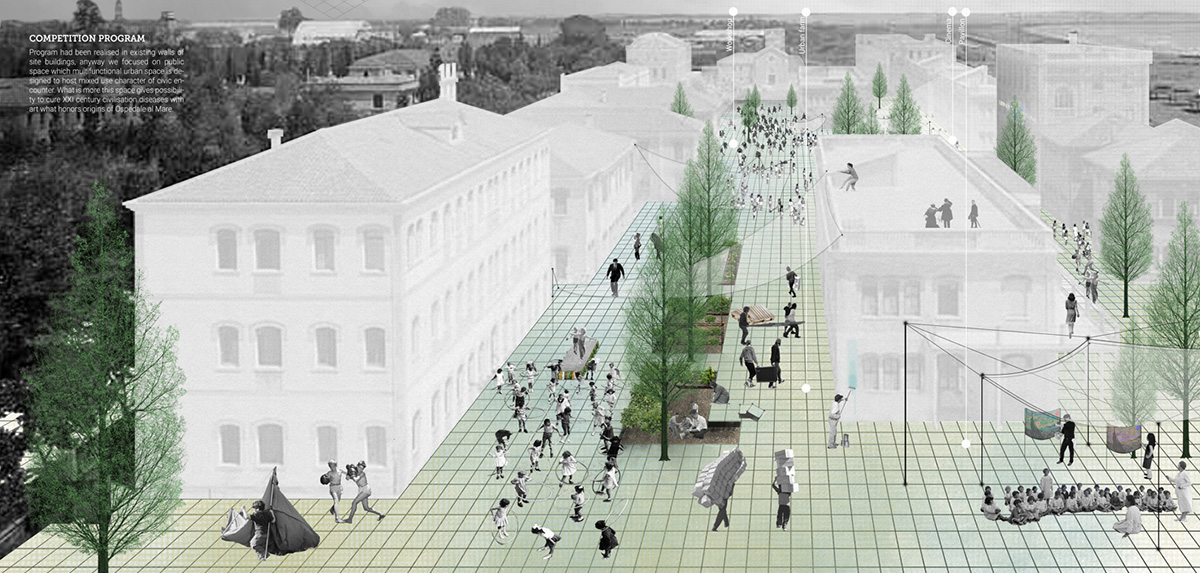
Under this light, the public space plays the most important role; activities that contribute to a successful healing are located outdoors, encouraging socializing and human connection. The open space is presented as an informal stage, an arena for health but also for civic encounter. Physically, this is materialized through a functional grid that covers the whole plot, a framework where different strategies that can be placed and replaced according to the needs and its effectiveness,
Appraised by the judges was the substratal concept of an architectural piece that has the regeneration of its users as goal but in turn is also shaped by the interactions with its own public, resulting in a constantly self-improving solution.
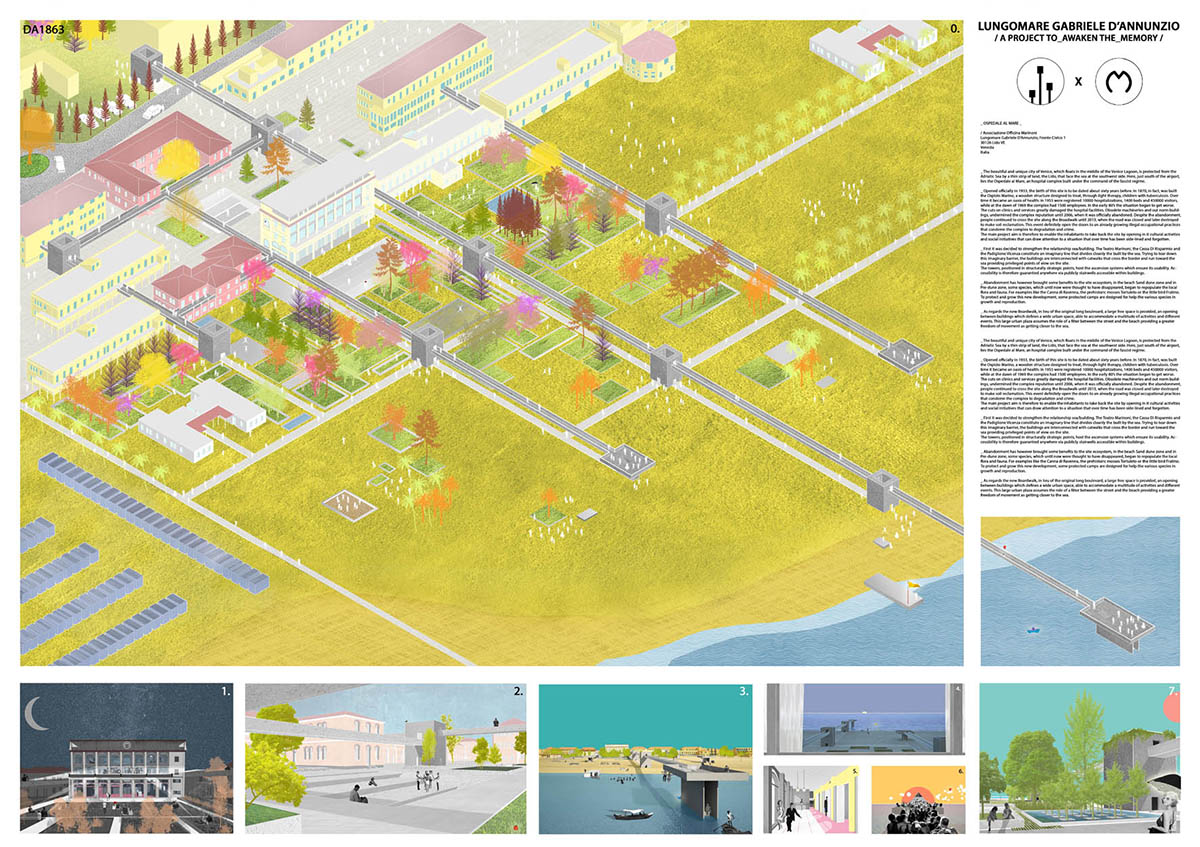
Honorable mention: ''Awaken the Memory'' by Giacomo Tomidei, Michele Ciervo and Lorenzo Ranzani from Torino, Italy
This project was recognized by the Jury as being a solid intervention that dealt specifically with the issue of the permeability of the Intervention Site. Beyond an accurate reading of the Brief and the Institution’s needs, a special attention is placed in the raised path which is animated by a series of activities while connecting all the buildings together.
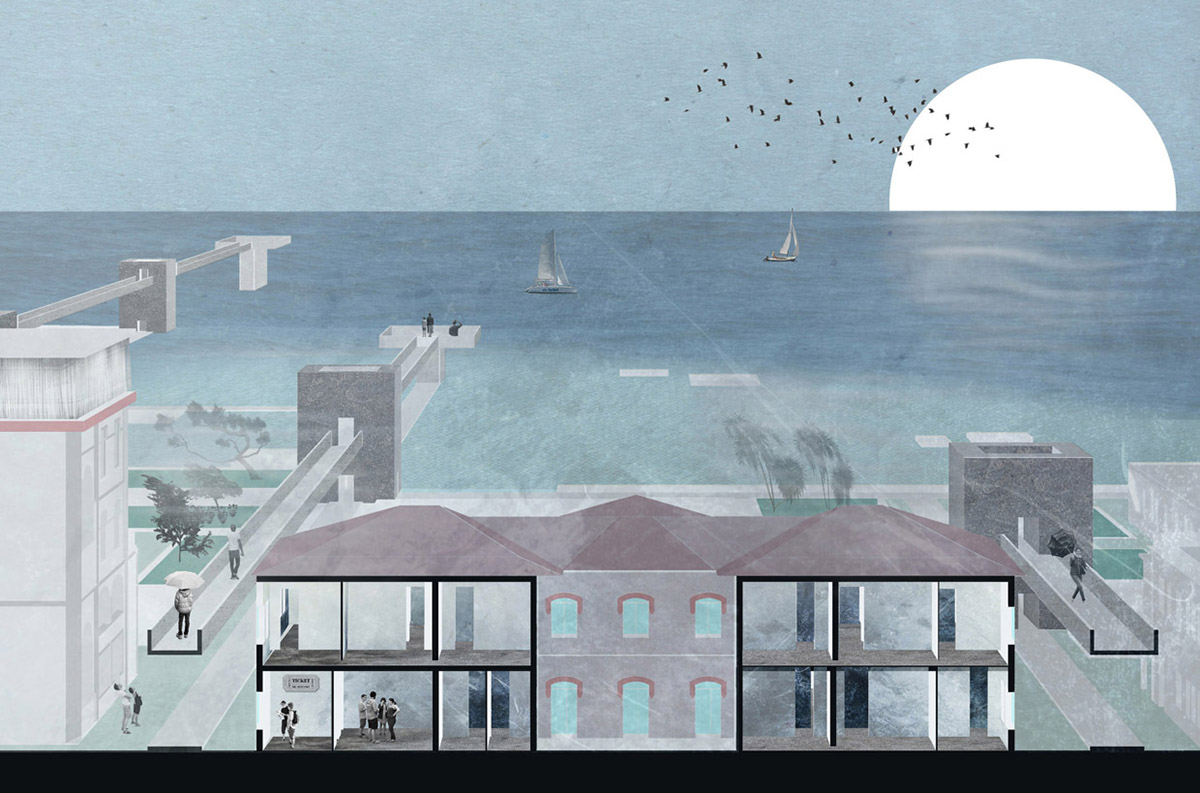
This element acts also as a structuring guideline; it provides a frame for the development of the green spaces and ensures a unequivocal connection to the waterfront. The creation of the Boardwalk dissolves the filter of the city towards the beach in this sector. It clearly signals the strategy of connection to the public realm through the beach rather than through the city.
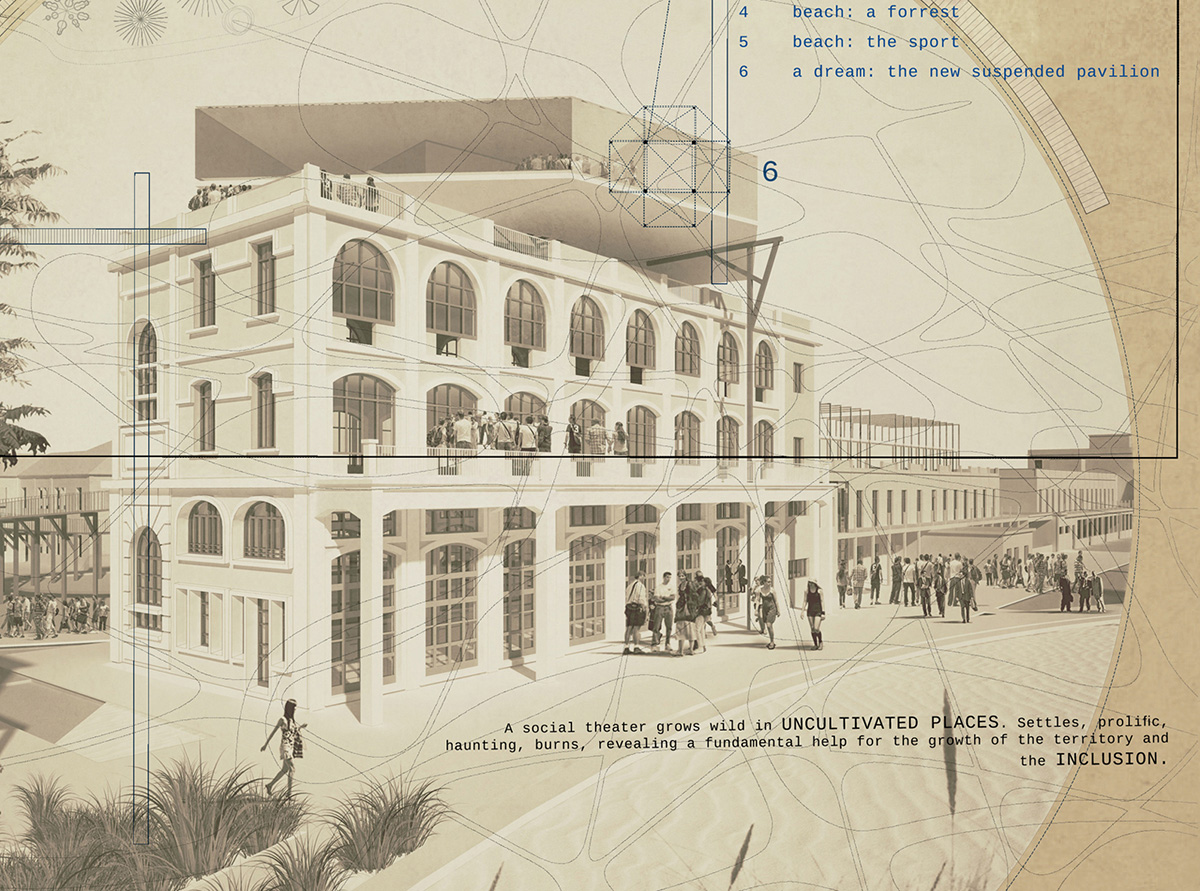
Honorable mention: ''Beauty can't wait'' by Gabriele Filippi from Genova, Italy
This project was commended by its high degree of playfulness, a circus-like set of elements provide a temporal functional in contrast to the more static stone buildings. A strong point of the proposal was the stark contrast between the old and new. The addition of a new series of elements will challenge the existing ones, provide new functionalities and answer to new demands, while referring back to addition process that constituted in itself the history of the place.
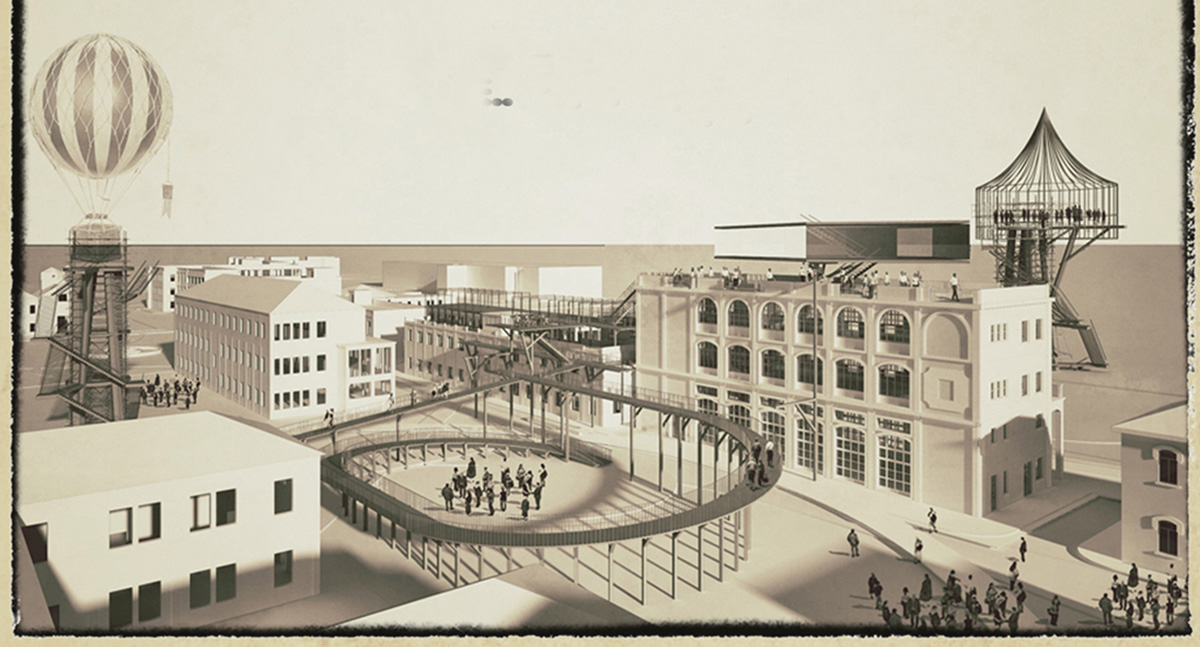
There is a strong focus on ephemerality; newer buildings are made out of lighter materials. Clearly explicit is a scaffolding aesthetic which enforces the ephemeral character of the overall intervention. The introduction of dynamic elements pulls people from the beach into the complex and vice-versa. The raised passageways open into unexpected places in the buildings. The direct opposition of shapes, colors, and materials generates a half-city, a temporary Sophronia that will be dismantled anytime soon, but in the meanwhile it is an invitation to pleasure and joy.

Honorable mention: ''The Biennale Beach'' by Sinan Mihelcic, Urh Wiegele and Andraz Hrovat from Stajn Arhitekti - Kamnik, Slovenia
The conceptual approach behind this project is focused on methods of growing the interest of the community in this location. It expresses a deep reflection over larger urban relations; the main aim is to improve the attractiveness of the location after so many years of decay, in straight continuation with the activities of Association Teatro Marinoni, Departing from a particular diagnosis of the demands of the place, an enthusiastic game plan is set: The Creation Centre is defined as an institution to foster the regional creativity by providing tools and spaces so that younger artists and the wider community can express themselves: a movement for a democratization of the arts.
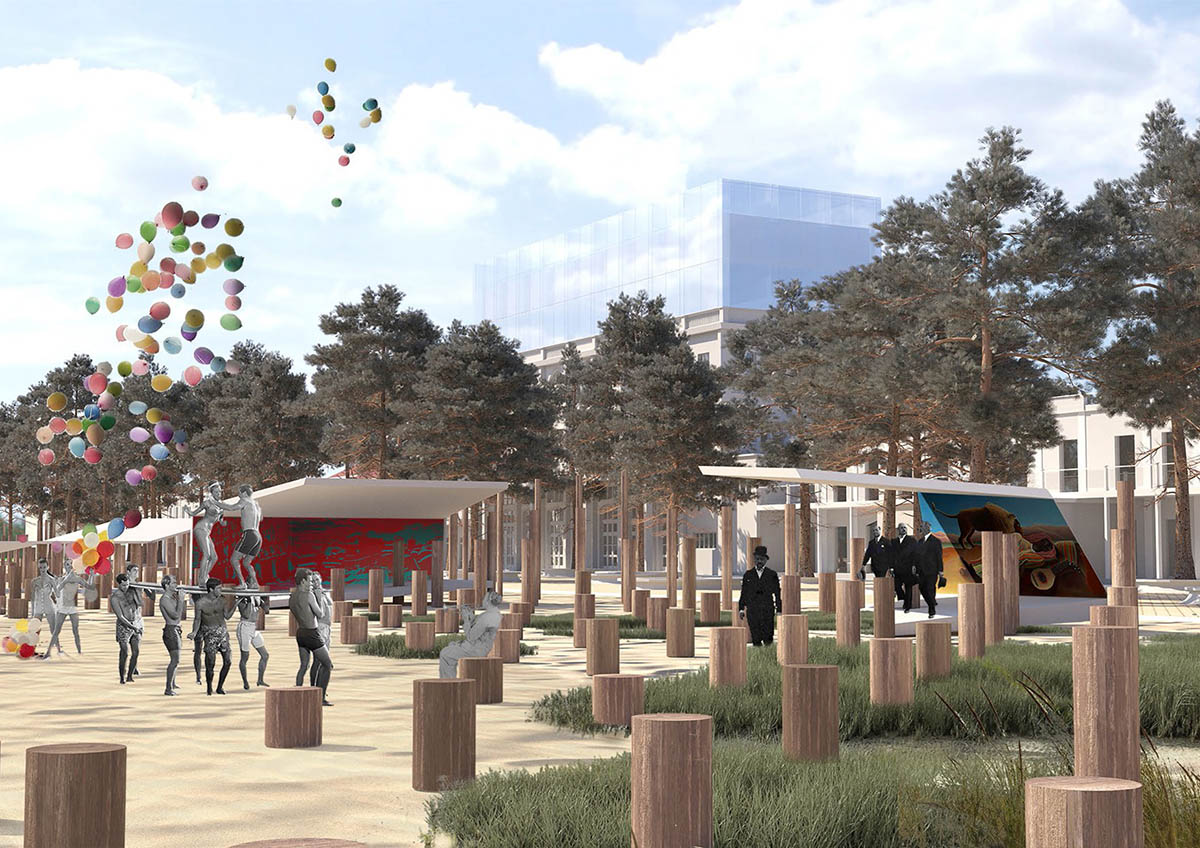
Another way to create relevance as a cultural hub is to generate a parallel calendar to the city activities. Another theme is the use of the beach as playground and the framework of the wooden piles as an abstraction of the elements which support the city that become a metaphor for the support of the creative efforts of artists. Another way is the privileged relation with the Beach and the Sea, treated as an element of attraction in the wider context of the city, therefore very important in the definition of the identity of this place. Another idea departs from a reading of a lack of cultural landmarks in this sector of Venice and aims to generate a new beacon out of Teatro Marinoni.
This proposal displays a view of the architecture process as an enabler of creation, who provides a working framework and seeds the breeding ground for artistic and cultural activities. All these different courses of action have the sole purpose of acting as an aggregator and replenishing the site with functions that would ultimately draw its energy from the community as well as benefit it.
The jury was composed of Andrea Curtoni, Arch. – Venice, Italy, founder at Associazione Officina Marinoni, Giulia Mazzorin, Arch. – Venice, Italy, founder at Associazione Officina Marinoni, Lorenzo Romito, Arch. – Rome, Italy, founder at Stalker and ON/Osservatore Nomade, Michael Obrist, Arch. – Vienna, Austria, founder at Feld72, Teddy Cruz, Arch. – La Jolla - California, USA, principal at Estudio Teddy Cruz + Forman, Fonna Forman, Arch. – La Jolla - California, USA, principal at Estudio Teddy Cruz + Forman.
All images courtesy of Ctrl+Space
> via Ctrl+Space
